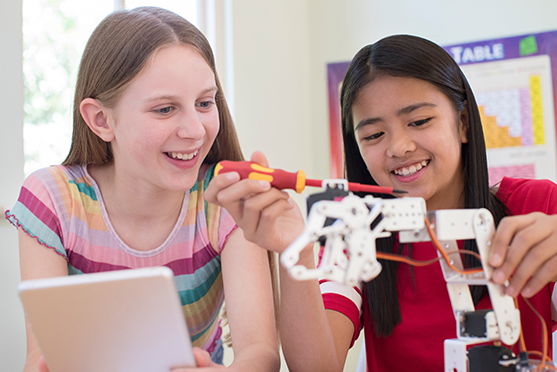Life in the Quarantine Zone for Middle School Students
Online learning is a solution to a new problem facing America’s schools. COVID-19 has caused most schools to close down in order to stop the spread of the virus. Students, teachers and parents have all been forced to shift how they socialize, and how they conduct the business of teaching and learning, especially with online learning.
School is a developmental process. Although every grade is different, middle schoolers are unique in terms of the social challenges they face as they go through puberty into adolescence. The rapid wholesale adoption of online learning has created numerous new hurdles for them as they try to adapt. Yet adapt they must.
Distance Learning represents a FUNDAMENTAL SHIFT in how we educate students and how we support their academic and social development
Collected thoughts: What teachers know
What do we know about middle schoolers?
Middle school students are social in nature. Friendships are essential to their identity, and to how well they learn.


Food for thought – Research findings
“Humans are an exquisitely social species. We are constantly reading each other’s actions, gestures and faces in terms of underlying mental states and emotions, in an attempt to figure out what other people are thinking and feeling, and what they are about to do next.”
“Adolescence is characterized by psychological changes in terms of identity, self-consciousness and relationships with others. Compared with children, adolescents are more sociable, form more complex and hierarchical peer relationships, and are more sensitive to acceptance and rejection by peers.”
Source: “Development of the social brain in adolescence”, Journal of the Royal Society of Medicine, 105(3), pp 111-116.
Middle school students learn from each other, and share in each other’s discovery. They become engaged and retain what they learn when they share.

Food for thought about Online Learning – Insights from Research
“There’s an evolutionary reason for this social learning: Figuring out how to get along with others is key to flourishing in life.”
“Schools can help by providing real-time instruction online, opportunities for teacher-student interaction, and efforts to help students feel part of a group, even when they are working at home. But studies show that many students aren’t being engaged in this way.”
“Teachers say they can see the toll social isolation is taking on their students.”
Source: The Hechinger Report, June 19, 2020. “Middle School Is Often Difficult” by Steven Yoder
Middle school students learn best when they can collaborate. It strengthens their social bonds. They give each other both reason and reinforcement to show up, learn and perform. This applies to online learning as well as in-person learning.

Summary
When you engage middle school students, they are much more likely to be healthy and to learn. That means connect with them, check in often, create a space where they can be social and collaborate with classmates, even if it is online learning.
Quick Links
- Resources that support Distance Learning
by California Dept of Education - Best Tools for Virtual and Distance Learning
by Common Sense Education - PBS Learning Media
Free standards-aligned videos, lessons, more - Tips for Designing Online Lessons
- 9 ways to use Flipgrid in (or outside) Classroom
- Use Seesaw to share learning
- Google Tools to Support Online Learning
- How Teachers Can Navigate School Closures
- Common Sense Education – Resources for families
- Preparing for jobs of the future
Related articles by Rick’s Blog
Engagement
The question I always ask myself is: How do I engage and connect with my students? They are a tricky audience. Each one is unique in their background, personality, interests and academic skills. The question is even more pressing as online learning plays a major role in education.
Read the full article: Connect with your students (Opens in a new browser tab)
Reviewing, communicating and feedback
When learning is the goal of any project, then teachers and students enter a constant feedback loop. How – and how often – that feedback is structured is essential to success. Educators refer to the importance of formative assessments that provide mid-course corrections rather than relying on final assessments. How mid-course feedback occurs determines whether students actually understand where they are in the learning process. Regular feedback is absolutely essential in the world governed by online learning
What is Good Feedback?
- It is targeted. That is, it is linked to learning objectives.
- It provides specific guidance to students.
- It is timely.
Read the full article: The Classroom Feedback Loop (Opens in a new browser tab)
